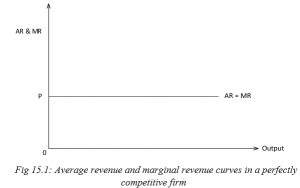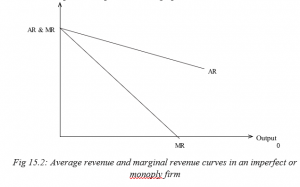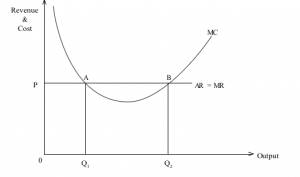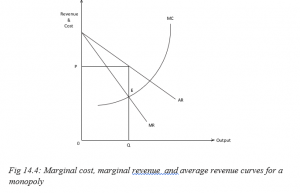It is every firm’s objective to maximise profits, sales, revenue and improve the public image. To achieve this, firms try to minimise costs while maximises on the outputs and sales volume. During production process, there are different costs that are involved. After the production, goods are sold to the final users who are the consumers. Different firms produce different volumes of output depending on different factors. After sales, firms can calculate their profits. Profit is the excess of cost of sales that is total sales less total costs. Firms can use the profit to expand the business or invest in other business.
Facts
Most of the firms produce their goods and services for sale and to realise profits. When goods are sold, there are proceeds received. Total amount of money value received by a firm or an industry by selling the goods and services is known as the revenue.
For example if Azam industry produces 100 units of a commodity per day and sells it at 20 FRW per unit, then its total revenue is: 20 X 100= FRW 2000 per day
15.1.2: Forms of revenue
In economics, there are different forms of revenue and can be classified into three categories such as:
1. Total revenue (TR)
This is the total sum of money value received from the sales of various quantities of output of product produced during a given period of time at a certain price level.
It can be calculated as the selling price of the firm’s product times the quantity sold in a given period of time.
Total revenue = price × quantity, or letting TR be the total revenue function: TR (Q) =P (Q) X Q
Where Q is the quantity of output sold, and P (Q) is the inverse demand function (the demand function solved out for price in terms of quantity demanded).
Or simply: Total revenue= Total product x price
TR = Q x P
2. Average revenue (AR)
This refers to the revenue per unit of output sold. It is obtained by dividing total revenue by output.
Average revenue = Total revenue
Total output AR = PQ/Q
Given that TR will consist of price multiplied by the quantity (P x Q) then:
AR=PQ/Q=P
This implies that the average revenue equals the price. Any curve relating average revenue to output is the same as the demand curve which relates price to output.
3. Marginal revenue (MR)
This refers to the additional revenue from an extra unit of output sold. Or it refers to a measure of the instantaneous rate of change of total revenue with respect to output Q. It is obtained by dividing the change in total revenue by the change in total product.
Marginal revenue = Change in total revenue
Change in total product (output)
MR = ∆TR
∆Q
15.1.2.1 Calculation of revenues
Copy the above table in your exercise book. Basing on the formulas discussed above for calculating average and marginal revenues, fill the table that you have copied in your exercise book. Make presentations to the class with the help of your teacher. Has the whole class got the same answers as you?
15.1.3: Relationship between total revenue (TR), average revenue (AR) and marginal revenue (MR)
Activity 15.5
In Activity 15.4, we calculated all the revenue from the table given. After calculating the revenues in Activity 15.4 above, what have you noticed? Use the information you obtained in the table above to explain if there is any relationship between total revenue (TR), average revenue (AR) and marginal revenue (MR). Write down the relationship and make presentations to the class.
Assuming that the table in Activity 15.4 represents perfect competition market and each unit is sold at same price. Both the marginal and the average revenue are constant. This can be illustrated as below:
15.1.3.1 The revenue position of a perfectly competitive firm
| Price (P)
(FRW) |
Quantity
(Q) |
Total Revenue
(TR) |
Average
Revenue (AR) |
Marginal
Revenue (MR) |
| 30 | 1 | 30 | 30 | 30 |
| 30 | 2 | 60 | 30 | 30 |
| 30 | 3 | 90 | 30 | 30 |
| 30 | 4 | 120 | 30 | 30 |
| 30 | 5 | 150 | 30 | 30 |
| 30 | 6 | 180 | 30 | 30 |
| 30 | 7 | 210 | 30 | 30 |
In the above table total revenue (TR) is obtained by multiplying output (Q) and price (P). Average revenue (AR) is obtained by dividing total revenue (TR) by quantity (Q). Under perfect competition market, this relationship between Average and Marginal Revenue can be illustrated in a graph as shown in the figure below.

Under imperfect competition and monopoly market, average revenue is not the same as marginal revenue. It is always greater than marginal revenue at all levels of output. This is because the business persons want to sell more, they must reduce price, not only on the extra units sold, but also on the earlier units. This can be illustrated as in the schedule below:
15.1.3.2 The revenue position of a firm operating under imperfect competition or monopoly
| Price (P)
(FRW) |
Quantity
(Q) |
Total
Revenue (TR) |
Average
Revenue (AR) |
Marginal
Revenue (MR) |
| 20 | 1 | 20 | 20 | 20 |
| 18 | 2 | 36 | 18 | 16 |
| 16 | 3 | 48 | 16 | 12 |
| 14 | 4 | 56 | 14 | 8 |
| 12 | 5 | 60 | 12 | 4 |
| 10 | 6 | 60 | 10 | 0 |
| 8 | 7 | 56 | 8 | -4 |
| 6 | 8 | 48 | 6 | -2 |
In the table above average and marginal revenues start off as equal but thereafter as the firm sells at a higher level of output, marginal revenue falls further below the average revenue. Both the average and marginal decrease as more is sold. This relationship can be represented in a graph as below:

: PROFITS
15.2.1: Meaning of profit
Activity 15.6
In our discovery in Activity 15.3, we learnt that most firms sell their product in excess to the costs of sale. In pairs, use internet and economic books from the library and carry out research on the concept of profit. Stress up on the meaning of profit and the various forms of profit to a firm. Take notes to use in class discussion.
- Basing on your research findings and in a class discussion, explain the concept of profit.
- What are some forms of profit you came across?
Profit refers to the earnings to an entrepreneur as a factor of production. It is the difference between total revenue received by the firm and the total costs incurred by the same firm. It is the residue which remains after paying all other factors of production. A firm realises profits when its average revenue is greater than average cost.
Remember!!! In the state of nature, profit is the measure of right.
15.2.2: Forms of profit
15.2.2.1 Normal profit
This refers to the minimum level of profits which can maintain a firm in business. It is realised when average cost is equal to average revenue that is AC = AR. Normal profits are also known as the transfer earning or supply price of the firm. It is also called zero economic profits.
If normal profits are earned in an industry in the long run such an industry is said to be in equilibrium under competitive conditions.
15.2.2.2 Abnormal/supernormal profit
This refers to profits which are more and above the normal profits. They are earned if average revenue is greater than average cost. They are also known as monopoly rent if earned in the long run.
15.2.2.3 Subnormal profit
This refers to the profits which are lower than normal profits obtained where average cost is greater than average revenue but average revenue is greater than average variable cost that is AC > AR > AVC.
15.2.2.4 Windfall profits
These are the unexpected profits realised by a firm either due to an abrupt increase in price, increased in demand for the product or an abrupt fall in the cost of production.
15.2.2.5 Gross profit
This is the excess of receipts or sales over the cost of goods sold.
15.2.2.6 Pure profit/Net profit
This refers to the residual profit which is left to the firm after deducting all sundry expenses for the gross profit.
15.2.3: Profit maximisation of the firm
Activity 15.7
All firms must pay some regard to profits. Carry out individual research on profit maximisation from firms next to your locality. Make notes on your findings. With the rest of the students, discuss profit maximisation of a firm under perfect competition and under monopoly markets.
(a) What similarities do these two markets have in terms of profit maximisation?
The major objective of any firm that is doing business is to maximise profits. The maximisation of profit corresponds to the accumulation of capital, which is the driving force behind economic activity within the production process. A firm maximises profits when MC=MR and the MC curve should cut the marginal revenue curve from below.
Remember: “Don’t STOP until you reach the TOP. When you reach the TOP do not STOP keep moving UP.”
15.2.3.1 Profit maximisation under perfect competition
Under perfect competition a firm cannot influence the market conditions. It is therefore a price taker. It can only make decisions concerning the output to be sold at the prevailing market price.

From the above illustration the firm maximises profits at point B where MC=MR and the profit maximising output is output q2 because it is greater than output q1 and the equilibrium price P which is equal to average revenue and equal to marginal revenue (P=AR=MR).
15.2.3.2 Profit maximisation under monopoly
Under monopoly situation, there is only one seller and the firm’s demand curve is downward sloping to the right and the firm is a price maker. Like any other firm, a firm under monopoly aims at making profits and the profits are maximised when the firm is in equilibrium where MC=MR AR/P and MC cuts the MR curve from below.

From the above illustration the firm maximises profits at point E where
MC=MR and the profit maximising output Q is produced and sold at price
Remember!!! Although every firm aims at profit maximisations, remember:
“The corporate/firm Responsibility: Environmental Preservation;
Consumer Protection; Sex and Race Discrimination (they must mean Sex and Race Liberation).”
15.2.4 The role of profits in production
- Profits determine the allocation of resources and ensure efficiency in resource allocation.
- Profits act as a reward to an entrepreneur for undertaking insurable risks and uncertainties in business. In the absence of profits entrepreneurs cannot undertake the initiative to produce goods and services.
- Profits provide a source of finance for investment and expansion of production units. This is usually in form of retained profits which are ploughed back into the business to facilitate expansion.
- They stimulate innovation in the production. This is because a firm which innovates realises higher profits which act as an incentive for more innovation, technological progress, resulting into economic growth.
- Promotes efficiency. The presence of profits results into efficiency in production and allocation of resources where by resources are always removed from unprofitable uses to more profitable uses.
- Promotion of economic welfare. Profits act as a yardstick to measure economic welfare where by the higher the profits, the higher the productive efficiency and the higher the economic welfare.
- Profits act as bonus to an entrepreneur for coordinating and combining factors of production in the right quantities so as to maximise output and minimise costs.
- Profits result into improvement in taxable capacity. As a result of profits government realises more tax revenue due to improvement in economic activity and income of tax payers.
Unit Summary
- Revenue was defined as all the earning to a firm from selling its output.
- Types of revenue were also identified as total revenue, average revenue and marginal revenue.
- Total revenue is the earnings received by a firm from sale of all its output while average revenue is the revenue per unit output sold and marginal revenue is the revenue from an extra unit of output sold.
- The relationship between marginal revenue and average revenue was also discussed in that MR=AR at all levels of output under perfect competition but under imperfect competition AR is always greater than marginal revenue at all levels of output.
- Profit was also discussed and it was defined as the difference between total costs to the firm and its total revenue
- Types of profit was also discussed and they normal profits and abnormal profits. Normal profits are the minimum level of profits which can maintain the firm in business realised when average cost is equal to average revenue and abnormal profits are realised when average revenue is greater than average cost.
- It was also discussed that all firms especially those engaged in business aim at profit maximisation and they maximise profits at a point where MC=MR and MC curve cuts the MR curve from below.
Unit Assessment 15
- (a) Distinguish between total revenue and marginal revenue.
- Explain the relationship between average revenue and marginal revenue curves under perfect and imperfect competition. Use
- (a) What is meant by profit? Differentiate between normal profit and abnormal profit.
- How does a firm maximise profit under perfect competition?
Explain the role of profit in th
